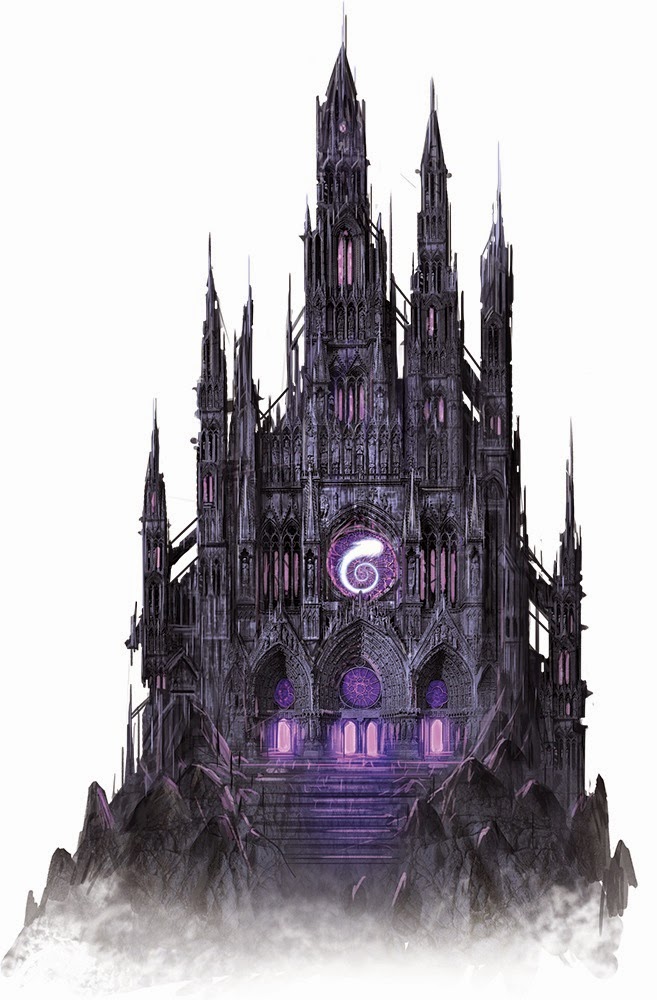Pharasma’s temples are often gothic cathedrals, usually located near a town’s graveyard, although a single bleak stone in an empty field or graveyard can serve as a shrine. Large temples usually have catacombs underneath, filled with corpses of the wealthy and former members of the priesthood, as burial under the goddess’s temple is believed to raise her opinion of the deceased when it is time for judgment. Even a remote Pharasmin monastery has a large area set aside for burial, and may be the final resting place of generations of wealthy and inf luential folk—as well as an uncountable accumulation of tomb treasures.
Each temple has a high priest or priestess for each aspect of the faith—birth, death, and fate. In theory they are equal, though the high priest of prophecy has assumed a secondary role in recent decades (and the position is often held by a strange or unstable person), and in smaller locales a single priest serves all three functions. Temples that include a crypt also have a cryptsmaster or cryptsmistress in charge of that facility. Ranking within a temple is usually based on seniority of service—those who have been in the priesthood longer outrank those who have served for a shorter length of time.
Hierarchy between churches depends on the size of the populations they serve; a large city temple has greater inf luence than a smaller town’s temple. Pharasma’s faithful dress in funereal clothes for religious ceremonies, always black (regardless of the local custom, though other colors and styles may be underneath a black outer garment) and accented with silver and tiny vials of holy water. Clergy living in monasteries dress in black or gray, depending on local custom; many of these take vows of silence to show their devotion to the Lady of Graves.
